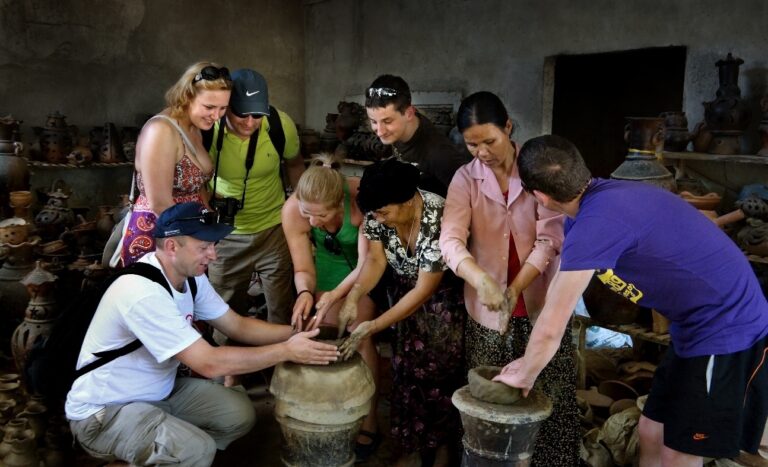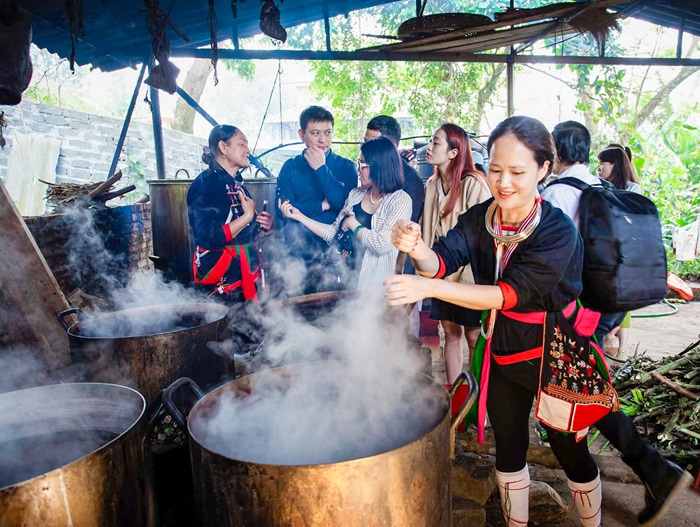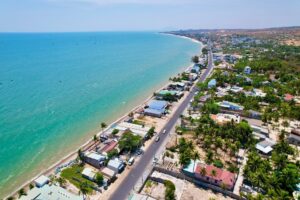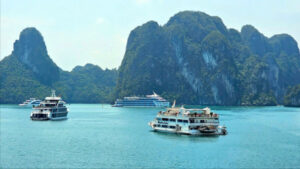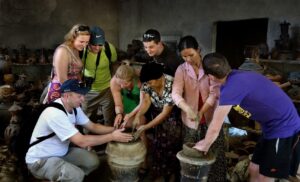My Son Sanctuary is one of the two UNESCO-recognised world cultural heritages in Quang Nam. The other is Hoi An ancient town.

Chien Dan towers. Photo: baodienbienphu
Besides the My Son Sanctuary, Quang Nam still preserves the trace of the Champa culture with several ancient moss-covered architectural works that embody unique sculptural and artistic styles.
Located on Provincial Road 609, Bang An Tower (in Dien An ward, Dien Ban town) is the only octagonal tower that has survived till now. It is a gigantic linga in shape.
According to the inscription on the stele at the tower, King Bhadravarman II built the Linga Paramesvara temple to dedicate it to Isanesvara between 875 and 977.
Thus, it is possible that Bang An Tower is actually the Linga Paramesvara.
The tower is approximately 20 metres tall with a high base and an octagonal cylindrical body, each wall side measuring 4 metres in length.
The front hall is quite long, with the main entrance facing east and two side doors. The roof has a conical shape, consisting of 8 curved layers that gradually taper to a point at the top. Outside the tower, there are two stylized sandstone Gajasimha statues.
Archaeologist J. Boisselier determined that Bang An tower dates back to around the late 11th century. Some other researchers, however, believe that the tower dates from the late 9th century to the early 10th century, while the two Gajasimha statues were built in the next century.
Bang An Tower was classified as a national artistic and architectural monument in 1989.
From Bang An Tower, along national highway 1A to the south, approximately 35km is Dong Duong Buddhist Monastery. It is located in Dong Duong village (Binh Dinh Bac commune, Thang Binh district).
According to the inscription found at Dong Duong, King Indravarman II built a Buddhist monastery and a temple dedicated to the Bodhisattva protector of the Laksmindra Lokesvara Svabhayada dynasty in 875.
Unfortunately, Dong Duong Buddhist Monastery has suffered extensive damage from natural disasters, time, and wars. Currently, only a section of the tower wall remains, which local people often refer to as the Light Tower (Tháp Sáng) along with the foundations of other architectural structures.
The main architecture of Dong Duong Monastery and many precious sculptures were discovered by the French in 1901 and 1902.
Most of these sculptures are now exhibited at the Museum of Cham Sculpture in Da Nang city, contributing to the renowned Dong Duong style in the art of Champa during the latter half of the 9th century. In 2000, Dong Duong Monastery was recognised as a special national monument.
The Chien Dan towers (in Tam An commune, Phu Ninh district) consist of 3 ancient towers arranged in a straight line along a north-south axis, with similar shapes.
The northern tower is the smallest, with its top and front hall completely collapsed, but its vaulted entrance remains relatively intact.
The middle tower is the largest and better preserved. The southern tower is smaller than the middle but larger than the northern. Its roof has completely collapsed.
During the restoration of the Chien Dan towers in 1989, archaeologists found a system of base walls with hundreds of valuable sandstone decorations and sculptures.
They are large stone panels intricately carved with images depicting warriors wielding weapons in dance, along with musicians, the Apsara, Kala and Makara faces.
Among the artefacts discovered at Chien Dan are two round altars with raised lotus motifs on two tiers, large in diameter, and placed on separate bases.
The artworks are classified into the Chanh Lo style, dating from the 11th to early 12th centuries. The Chien Dan towers were designated as a National Artistic and Architectural Monument in 1989.
About 500 metres southeast of Chien Dan towers, in the direction of a bird's flight, are the ruins of An Phu (or Lan tower). It is situated in An Thien hamlet (Tam An commune, Phu Ninh district). The tower was excavated and uncovered in February 2002.
According to archaeologists, Lan Tower is of a longhouse style, similar to the mandapas (a guest house or a meditation hall) in My Son. The tower may date back to around the late 10th century.
In addition to the UNESCO World Cultural Heritage Site of My Son Sanctuary, these towers are all precious gems of the Champa culture in Quang Nam.
Translated by Q.Thu


